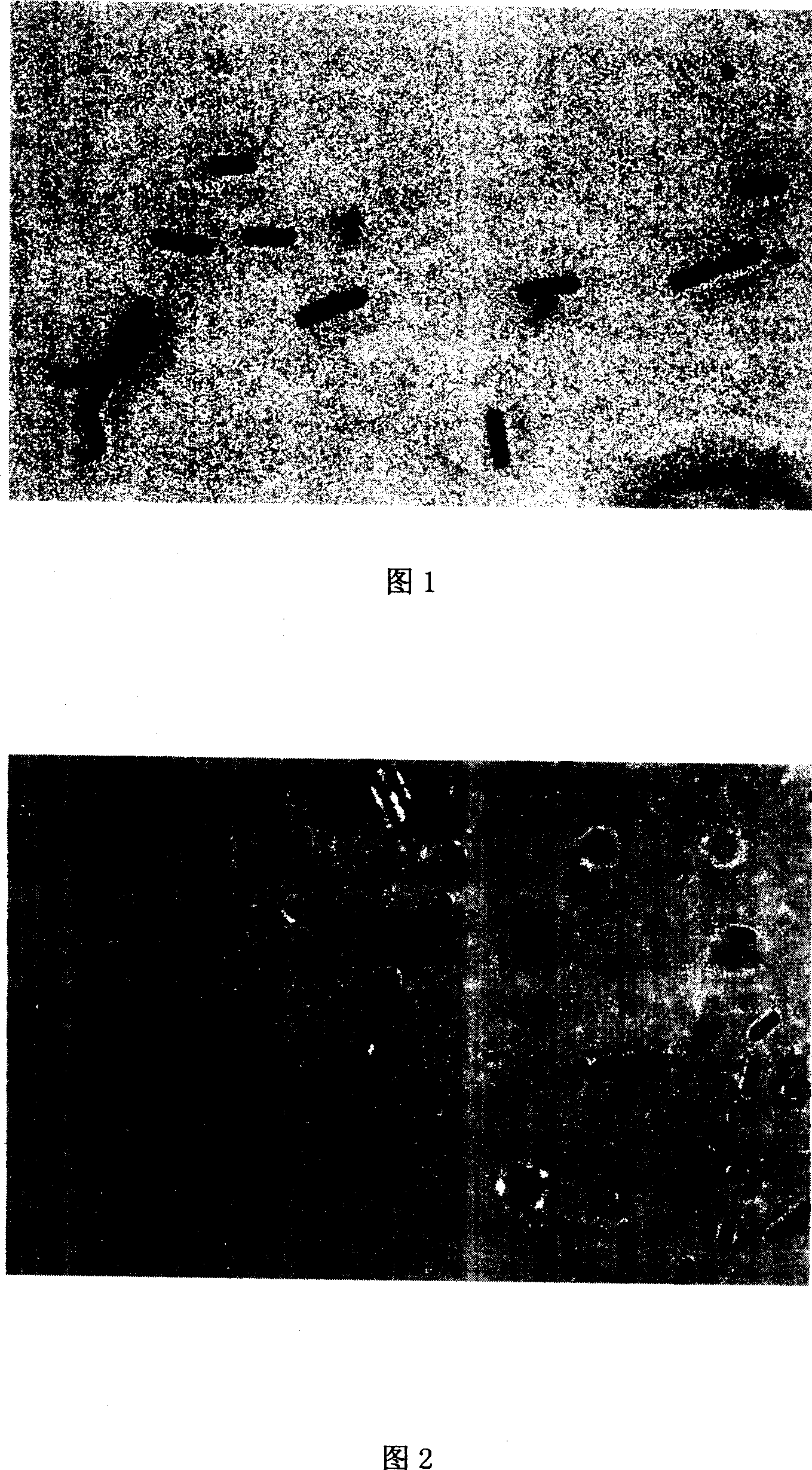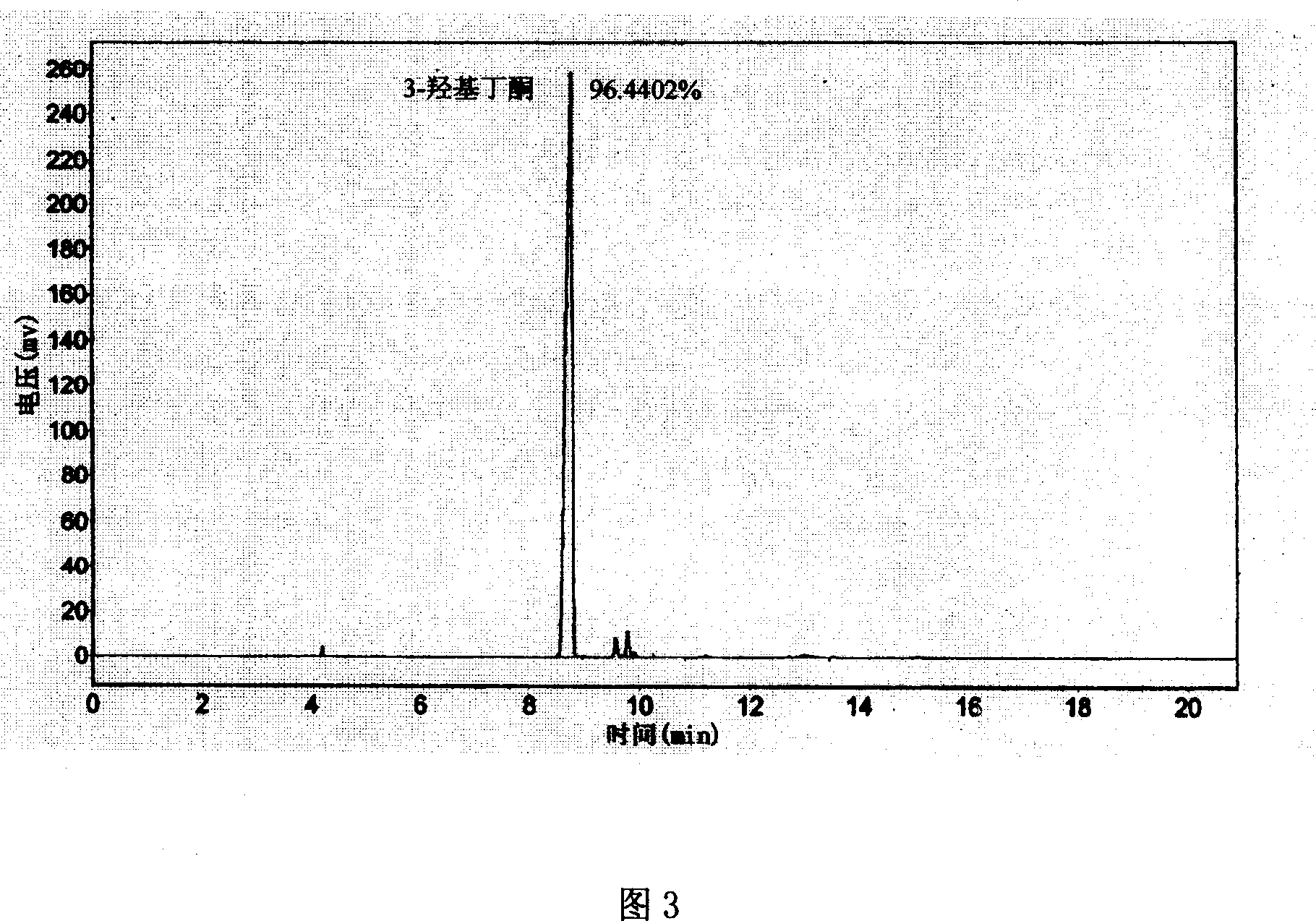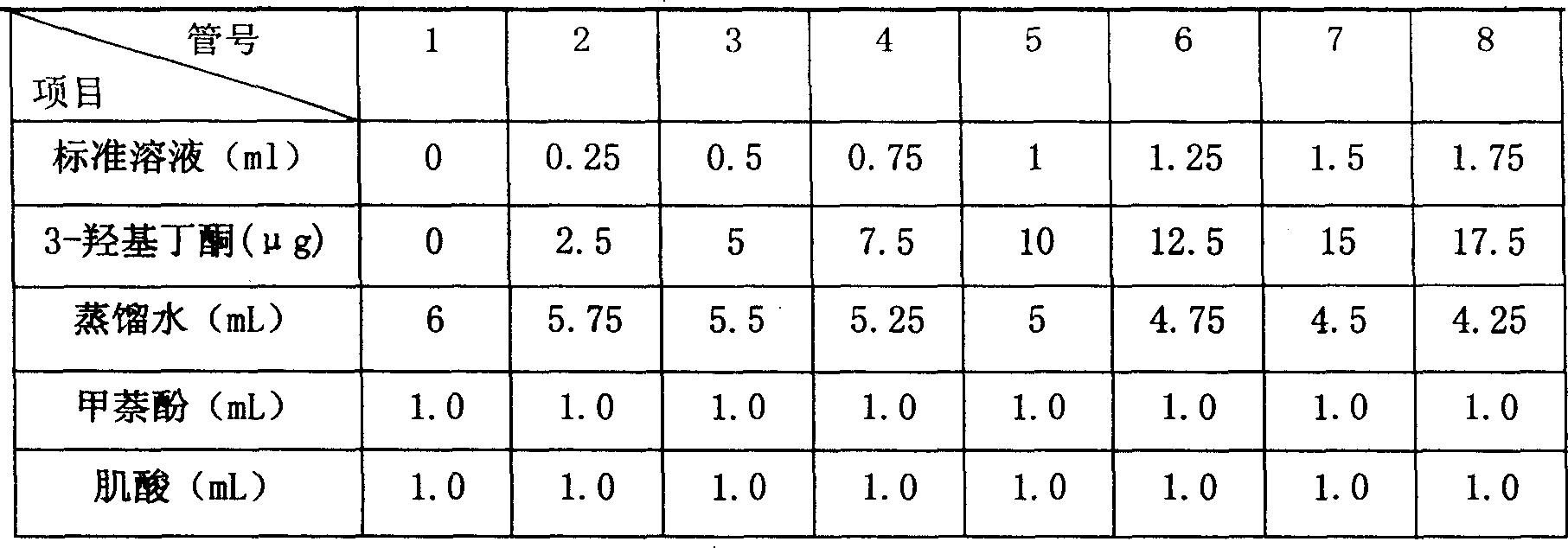Use of Bacillus subtilis (Ehrenberg)Cohn in preparing 3-hydroxy butanone
A technology of Bacillus subtilis and hydroxybutanone, applied in the biological field, can solve the problems of raw material source, product price and scope of use, no large-scale popularization and application, no 3-hydroxybutanone, etc., and achieve attractive application Prospect, the effect of stable fermentation performance and high yield
- Summary
- Abstract
- Description
- Claims
- Application Information
AI Technical Summary
Problems solved by technology
Method used
Image
Examples
Embodiment 1
[0053] Example 1 Breeding of 3-hydroxybutanone-producing Bacillus subtilis
[0054] The starting strain SFA-W15 (a strain of Bacillus subtilis that accumulates a small amount of 3-hydroxybutanone) was inoculated in the liquid seed medium, cultured to the middle logarithmic growth phase at 37°C, the bacteria were collected by centrifugation, and washed with sterile saline for two times. Then add sterile saline to make a bacterial suspension, so that the cell concentration is 1×10 8 -10 9 pieces / ml.
[0055] Take 10ml of the above-mentioned bacterial suspension and put it into a plate, put it under a 30W ultraviolet lamp to irradiate, the irradiation distance is 15cm, and the irradiation time is 3 minutes, 5 minutes, 7 minutes, 10 minutes. Plate, cultured at 37°C for 1-2 days in the dark, picked a single colony and transplanted to the slope, cultured at 37°C for 1-2 days, inoculated the shake flask with fermentation medium after the slope matured, fermented for 60 hours at 37°...
Embodiment 2
[0058] Example 2 Breeding of high-yield 3-hydroxybutanone Bacillus subtilis CGMCC NO.1869 strain
[0059] The mutant strain SFA-U97 strain screened in Example 1 was inoculated into the liquid seed medium, cultivated to the middle logarithmic growth phase at 37°C, collected the bacteria by centrifugation, washed twice with sterile normal saline, and then added sterile normal saline to make Bacteria suspension, so that the cell concentration at 1 × 10 8 -10 9 pcs / ml, spare.
[0060] Preparation of nitrosoguanidine treatment solution: Weigh 20mg of nitrosoguanidine, place it in a 100ml sterile Erlenmeyer flask, add 2ml of acetone to dissolve it, then add 18ml of Tris buffer solution (pH6.0, 0.5mol / L) and mix well ,spare.
[0061] Take 10ml of the above-mentioned nitrosoguanidine treatment solution, add 10ml of bacterial suspension, incubate and shake at 30°C for 50-60 minutes, and take samples every 10 minutes. After sampling, first dilute 1000 times to stop the reaction, then...
Embodiment 3
[0068] Example 3 Application of Bacillus subtilis in the preparation of 3-hydroxybutanone
[0069] The sequence of steps involved in applying the method is as follows:
[0070] (1) Strain selection: select Bacillus subtilis (Bacillus subtilis) CGMCC NO.1869;
[0071] (2) slant culture activation: inoculate the strains on the slant medium, and culture it statically for 30 hours at 37°C, and set aside;
[0072] (3) Seed cultivation: the bacterial strain cultivated in step (2) was placed in 30mL liquid seed culture medium (250mL Erlenmeyer flask) with an inoculation loop under aseptic conditions, and the rotation speed was set to 160 rpm and the radius of rotation was 160 rpm. On a 40mm shaker, culture at 37°C for 12 hours to obtain seed solution;
[0073] (4) Fermentation culture:
[0074] Shake flask fermentation: inoculate the seed liquid in a shake flask (500mL Erlenmeyer flask) equipped with 80mL fermentation medium with an inoculum amount of 3% by volume, at 37°C, with a...
PUM
 Login to View More
Login to View More Abstract
Description
Claims
Application Information
 Login to View More
Login to View More - Generate Ideas
- Intellectual Property
- Life Sciences
- Materials
- Tech Scout
- Unparalleled Data Quality
- Higher Quality Content
- 60% Fewer Hallucinations
Browse by: Latest US Patents, China's latest patents, Technical Efficacy Thesaurus, Application Domain, Technology Topic, Popular Technical Reports.
© 2025 PatSnap. All rights reserved.Legal|Privacy policy|Modern Slavery Act Transparency Statement|Sitemap|About US| Contact US: help@patsnap.com



